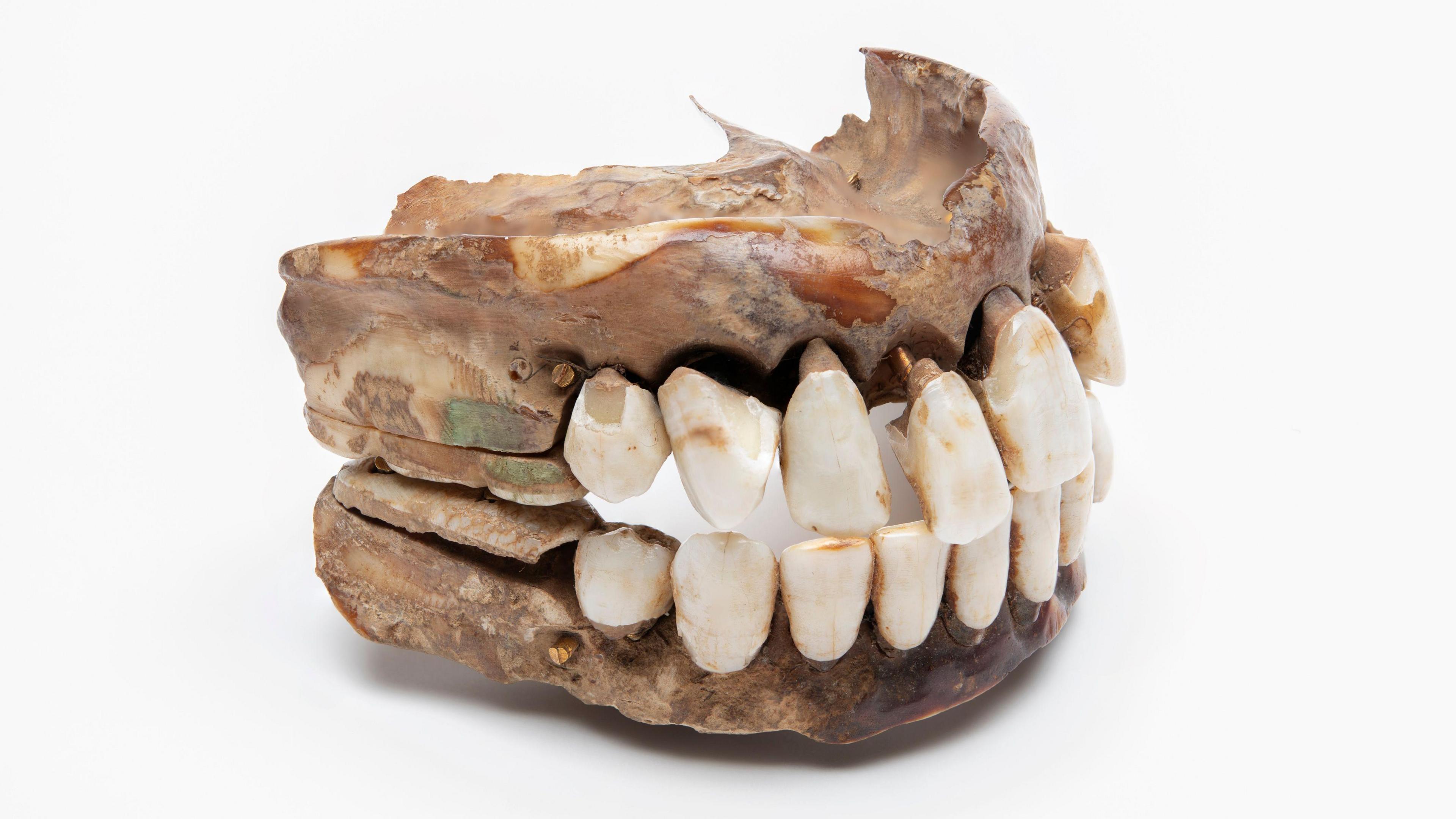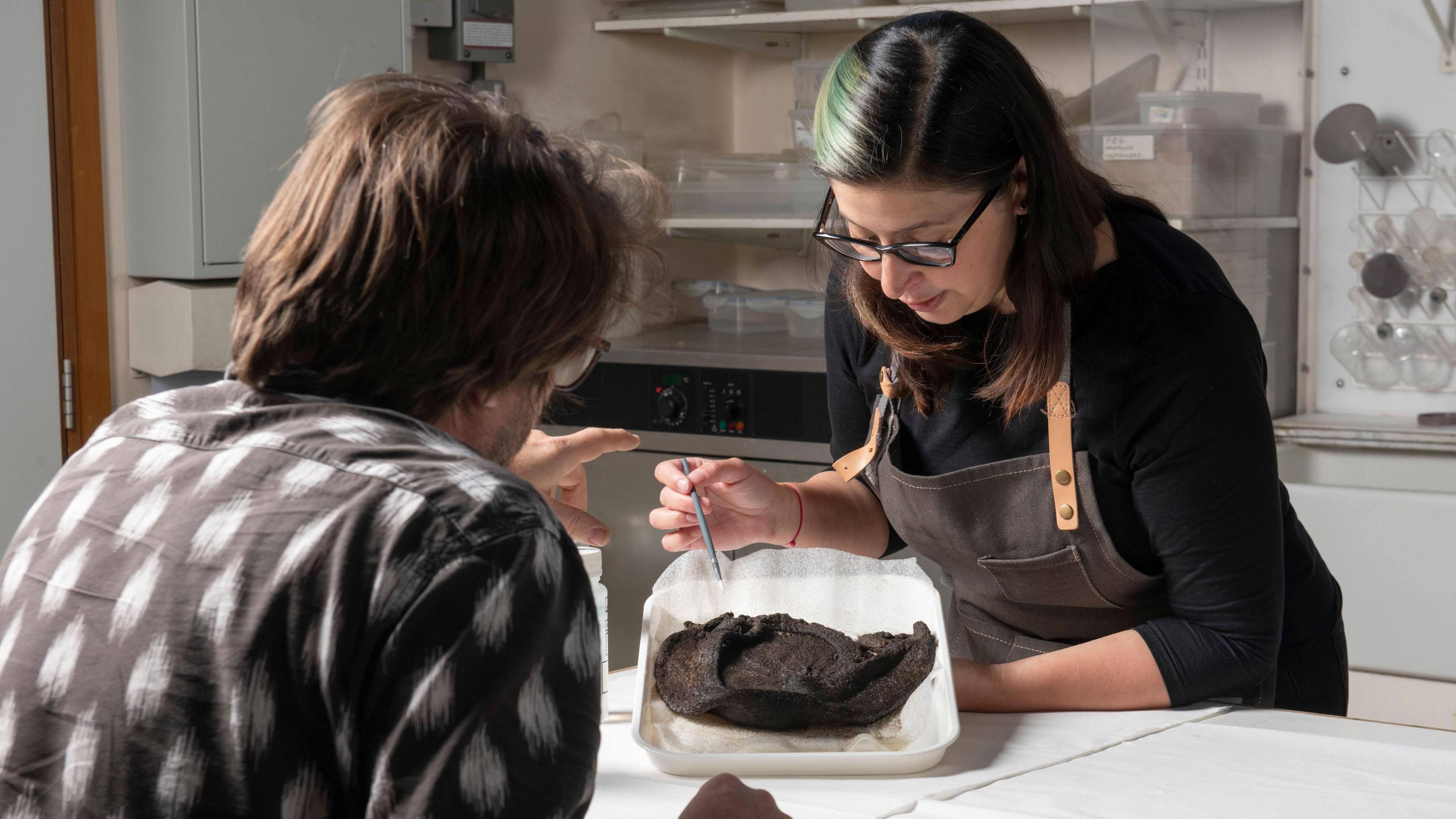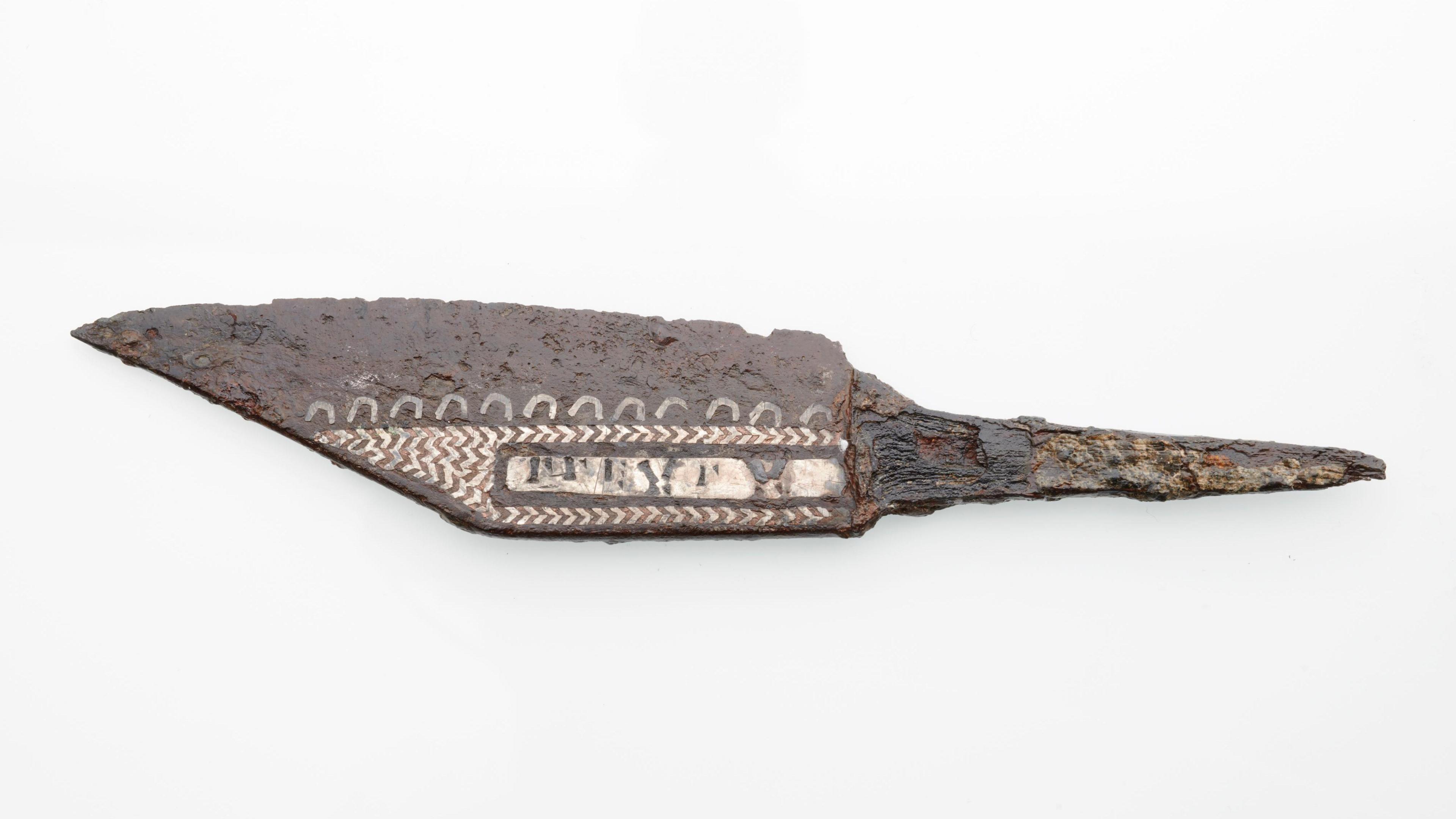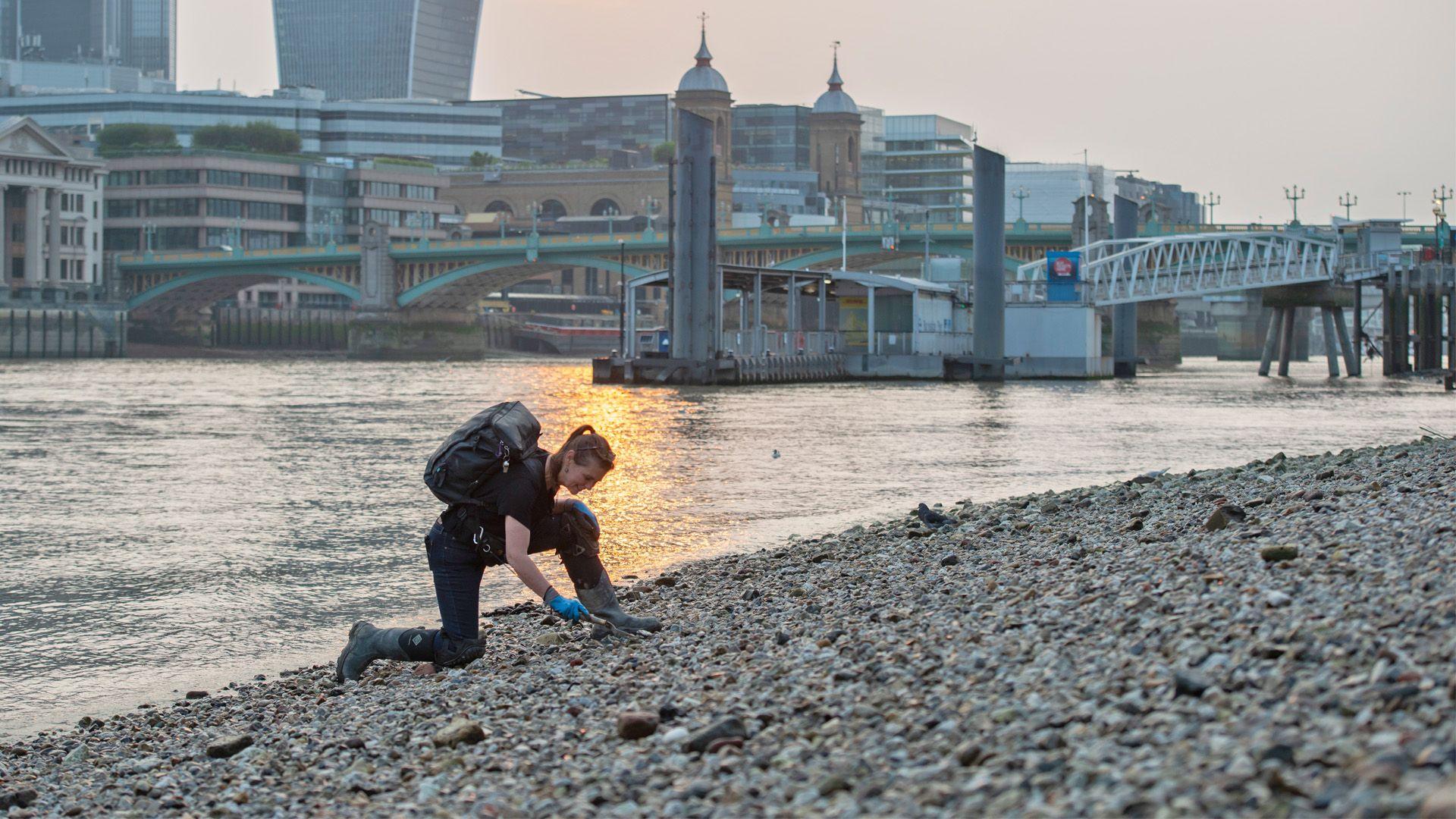False teeth and a Viking dagger shown off in new mudlarking display

Smile! These gnashers were discovered on the banks of the River Thames in London by mudlarkers, and once belonged to a very wealthy person in the 18th Century
- Published
A pair of 18th Century false teeth, a Tudor hat, and a Viking dagger are all going on display as part of a new exhibition all about mudlarking.
Mudlarking is a centuries-old London tradition that was originally carried out by poorer Victorian children, looking for items to sell.
Now, mudlarking has become a hobby for history-lovers who enjoy searching the banks of the River Thames for ancient treasures.
Some of the items found by mudlarkers are going on display for the first time ever in a special new exhibition at London Museum Docklands from April 2025.
- Published19 May 2022
- Published12 April 2024
- Published14 February 2019
What has been discovered by mudlarkers?

Two museum workers examine the Tudor hat carefully
One of the objects that historians are excited about is the 500-year-old Tudor knitted hat, which was inspired by the velvet caps worn by the upper class during this time.
Other impressive discoveries include a Medieval gold ring with the message: ‘For love I am given’ inscribed on it, as well as an ancient Viking era dagger with the name of its owner, Osmund, on it.
Everyday objects like clay pipes, 18th Century false teeth, and Medieval spectacles were also discovered by mudlarkers over the years.

This 10th Century Viking dagger is known as a scramasax - it's an iron blade with silver in it and personalised with the name Osmund
The Port of London Authority say anyone can try mudlarking on the River Thames, but they must have an official permit from them.
As well as this, any items that are 300 years old or more must be reported to the Finds Liaison Officer at London Museum.
Around 700 discoveries are made each year, and 5,000 objects are identified by the museum's 'Finds Liaison Officer' for the Portable Antiquities Scheme, with some taken into the museum's collection.

An official mudlarker digging by the Thames
Kate Sumnall, who works for the London Museum, said the exhibition would explore "the stories of generations of people who have visited the city or called it home".
“We are lucky in London to have this amazing tidal river environment that has preserved so much of our past," she said.
The wet, clay environment of the river banks is the main reason that many of the objects have been preserved for hundreds of years instead of breaking down.
"It is the longest archaeological site in London and here we find an unbelievably rich selection of finds.
"Thanks to the dedication and expertise of today’s mudlarks, we are constantly uncovering new objects that inform our understanding of history."
